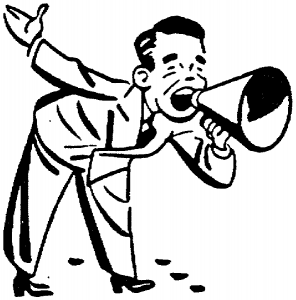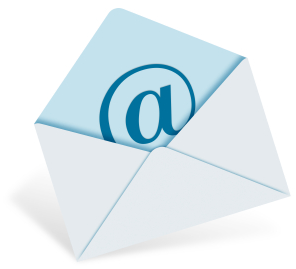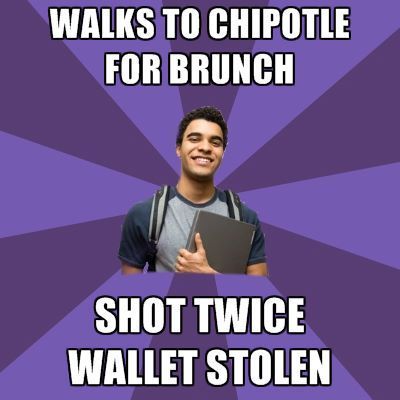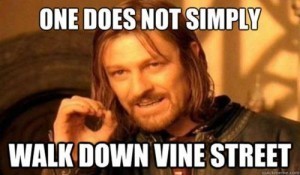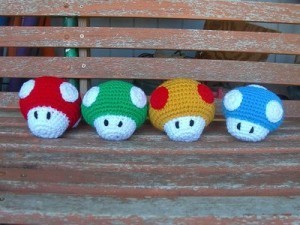Jane Friedman's Blog: Jane Friedman, page 189
May 28, 2012
Love Letter to Cincinnati (#3)
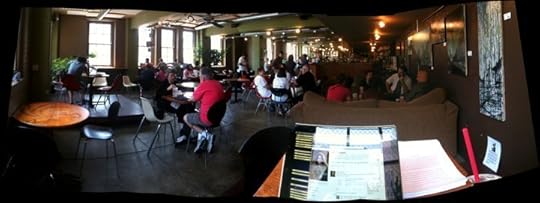
A panorama of Coffee Emporium in OTR (Cincinnati)
Note: Read the earlier installments in this series, #1 and #2.
My favorite places in Cincinnati are mostly tied to ritual. But I didn’t even believe in ritual until recently, around the time I read Eat, Pray, Love by Elizabeth Gilbert. She writes:
This is what rituals are for. We do spiritual ceremonies as human beings in order to create a safe resting place for our most complicated feelings of joy or trauma, so that we don’t have to haul those feelings around with us forever, weighing us down. We all need such places of ritual safekeeping. And I do believe that if your culture or tradition doesn’t have the specific ritual you are craving, then you are absolutely permitted to make up a ceremony of your own devising, fixing your own broken-down emotional systems with all the do-it-yourself resourcefulness of a generous plumber/poet.
In addition to ritual, I also became a believer in routine—probably ritual’s twin sister, hardly distinguishable. I used to think routines would make me boring, predictable, and uncreative. Quite the contrary. If you’ve read any of Jonathan Fields’ Uncertainty, you realize that routine represents a certainty anchor—a stabilizing and trustworthy force that leaves you free to take risks elsewhere.
For the last few years, my ritual or routine, whichever you’d prefer to call it, has revolved around Coffee Emporium, a coffeehouse about a 5-minute walk from my apartment, in OTR. I take my laptop and start the day in a lively environment where the baristas know my order, the sun shines bright, and the ceilings are high.
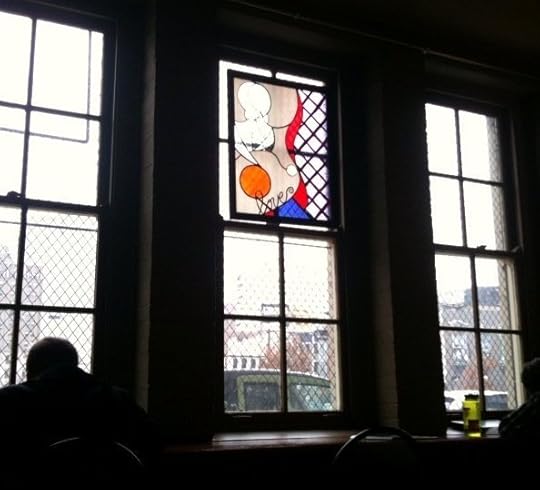
Inside Coffee Emporium (OTR / Cincinnati)
It’s probably the first ritual I ever consciously created for myself. When I first arrived in the city, in 1998, I had no activity that anchored me except for a morning run. Later, when M and I were together, we fell into a Friday night ritual of movie, dinner, and bookstore browsing. It could’ve been duplicated in any city, but I never realized how central that had become to my week’s structure until it was gone.
I don’t know that anyone faces the end of a marriage with a clear understanding of how life changes, but I did nothing to mark the change in my life, nor did I seek any new rituals or support. I had yet to see any importance or relevance in rituals, and furthermore, my modus operandi was to ignore beginnings & ends until I had a nice, good, long distance from them.
Fortunately, though, I did move to a new neighborhood (OTR), which forced me to discover new places and activities that I could truly call mine, and that I came to love.
The first and most important of these was the Roebling Bridge, part of my daily running route. Roebling is the suspension bridge over the Ohio River, connecting Cincinnati with Covington, Kentucky. When built, it was the longest suspension bridge in the world, at 1,057 feet, and it’s considered the precursor to the Brooklyn Bridge.

Roebling Bridge at sunset (and under construction in 2010), Ohio River
I’ve probably taken more pictures of the Roebling than any other structure in Cincinnati. While I worked at F+W, I even brainstormed a new imprint called Rubico that used the outline of the Roebling towers as its logo.
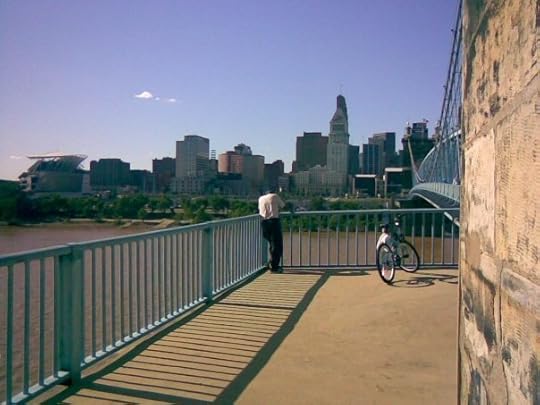
View of downtown Cincinnati from the Roebling Bridge
As months and years passed, many little places downtown began to play a role in relationship rituals—having drinks at certain places on a date (Grammer’s—while it was still open—and Neons), returning to a particular restaurant for special romantic celebrations (The Palace, Nicola’s), reserving intimate conversations for this or that lounge (The Celestial, The Cricket at The Cincinnatian).

The Conductor plays piano in the Cricket Lounge at The Cincinnatian
There are some rituals I always wanted to have in Cincinnati, but never managed to develop. I wanted to spend Saturday mornings at Findlay Market, but could never seem to get up early enough (or feel motivated enough to join the crowds).
I also wanted to have more rituals connected to the holidays and Cincinnati traditions, but that never happened either. I usually saw the Labor Day fireworks by accident while driving south on I-71; I never attended a Reds Opening Day parade; I never went to Oktoberfest even though it was only blocks away from home, I never went to a Taste of Cincinnati.
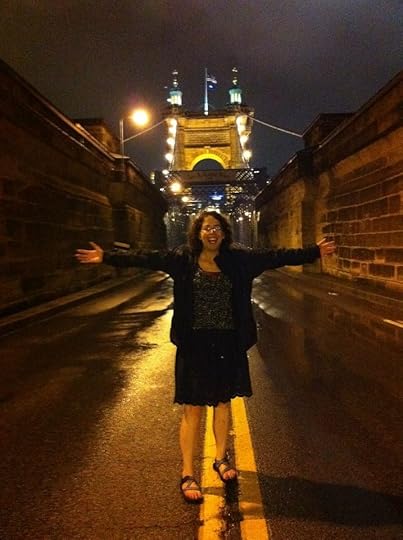
One of the few Labor Day fireworks celebrations I attended in Cincinnati, in 2011. I'm standing on the Kentucky side of the Roebling Bridge—emptied out due to fireworks over the river.
But I don’t regret any of that. The places and times most dear to me are tied to meaningful moments in a relationship (both platonic and romantic) that often happened entirely by accident, or became important long after the fact … those times when we came to a new understanding, dared to dream about an entirely new future, or even argued about fundamental differences.
The last place I’ll be in Cincinnati, the Saturday morning I drive off, is Coffee Emporium. I’m already envisioning my last time through that door, wondering exactly what a good-bye looks like, and leaving with caffeine in hand, to find new rituals in Charlottesville.
May 25, 2012
Do You Adopt a Totally Different Voice to Market Yourself?
Today I’m a guest over at Writer Unboxed, where I discuss how finding your unique writing voice is not so different from finding your marketing voice.
What Authors Seem to Forget About Marketing—Especially Those Who Dislike It
Here’s a brief snippet:
I think we can all agree that every author has a distinct writing voice or style, and that—over time—authors usually develop stronger and more confident voices.
What is acknowledged less often is how every author has (or should have) a distinct marketing voice and approach.
Sometimes, because we have less experience with marketing, or feel uncomfortable with the practice, we brace ourselves, even change ourselves, to engage in the activity.
This is good for nobody.
May 23, 2012
Please Do Not Pay Money for an Online Ad Until You Read This
Articles about the ineffectiveness of online advertising are a dime a dozen. (See this one and this other one, from just this past WEEK!)
I rarely advocate authors spend money on advertising, in part because it takes a specialized skill set to do it well. Plus you have to know how to reach your target market, and some authors don’t even know the definition of that term.
But if you think advertising might be helpful to you or your work, here’s an introduction on how to do it well.
Is your ad meant to build awareness or to make a sale? Most authors I know are interested in advertising to boost sales. If that’s the case, keep reading.
Does your ad have a call to action? You need one. A good example might be, “Download a free sample now,” or “Explore the TOC now.”
If your ad has multiple versions or multiple frames, make sure the call to action appears in every frame and version.
Provide as much info as possible about the pricing or promotional offer. Discount offers and discount codes attract attention.
Refer to deadlines or limits in quantity, if applicable. That will persuade people to take immediate action.
An effective ad is well-designed and balanced. If your ad is more than just a text-based ad (i.e., a display ad), you should probably hire a professional designer to ensure it’s easy to read and hangs together.
When people click on your ad, they should go to a landing page that matches the message in the ad, and offers more detail about the offer or product. Sometimes it is appropriate to link directly to an Amazon page. Just make sure that Amazon page has all the information it should (full book description, about the author, praise/blurbs, reviews, etc).
Other tips
If you have little or no experience copywriting, then gather as much feedback as possible from other authors and readers about the effectiveness of your message and call to action.
Your ad needs to be targeted to an audience that will be receptive to your message. The biggest site is not the best; rather, choose a site that has a devoted fan base that you know will be interested in the type of work you’ve produced.
Consider what other ads (or noise) you might be competing against on a particular site. The position of your ad also matters. If it’s buried at the bottom of the site, or in a sidebar with a ton of other stuff, it might not register with visitors. (This is particularly important if you’re paying a flat fee for the ad, rather than a rate based on how many clicks the ad gets.)
If you don’t know what CTR means, or you can’t define “conversion,” you’re probably not ready to start experimenting with online ads. Educate yourself fully (see resources below) before spending a dime.
Resources
One-page crash course from Buzz Marketing
HubSpot blog (search the site for “online ads” to find helpful articles)
Copyblogger (excellent resource for learning copywriting)
Google’s Tools for Online Success (they should know what works; more than 95% of their revenue comes from online advertising)
Marketing Sherpa
If you’ve tried online advertising before, where did you decide to advertise and why? Was it successful? Will you advertise again?
May 22, 2012
Starving Artist Vs. Slimy Marketer: How to Strike a Balance

Art vs Commerce by Tom Giebel / Flickr
Today’s guest post is from one of my UC students, Jarrod Welling-Cann. He is facing the issue—as we all do at some point—of how to making a living from his art. His thought process here is particularly relevant for any creative professional wondering about the role of marketing, sales, and promotion in the artistic life. His starting point is The Education of Millionaires by Michael Ellsberg, an excellent read for just about anyone who seeks to make a living doing what they love.
“I realized I was a people person and I needed to get educated in the game of life.”
Whenever Ellsberg used the word “entrepreneur,” stereotypes in my head began to play out: money-driven, (slimy) success-hungry business [persons].
But when Ellsberg reflects on his early writing, and his attempt at entering literary bad-boyhood—with Rock Star Envy, along with his Black Masks, White Guilt thesis, and other rants on ecofeminism—I was reminded of my own temperament and inclinations. I’ve spent a lot of time reading critical theory in the realms of feminism, Marxism, media theory/communication, and environmental sustainability—and while I find all of these extremely important for philosophical direction, none of the them really help me put food in my fridge or pay my rent on time (directly).
All people are in themselves valuable, creative, complicated, coping with fears and desires in their struggle to survive—yet how can we all live well without domination or submission?
While I’m very passionate about analyzing structures of power, obedience, prejudice, and class, race, gendered and structural violence, I also want to know (as most people do) how I can stay alive and productive without being under the authority of others, without depending on the power of others for my own survival—and not just survive but actually be good to people.
This is where the dilemma occurs.
How can I become self-sufficient without either relying on obedience to authority without exploiting others and becoming an oppressive authority that delegates obedience (stress, guilt, anxiety) in a competitive labor-for-income / income-for-resources mode of survival?
I digress (a little). Perhaps a starving-artist ethos won’t bring sustainable benefit to those in need but neither will a slick-n-slimy mosquito-marketer’s ethos help. A starving artist denies the need to understand markets, and the slick-n-slimy mosquito-marketer denies people their humanity—their right to be vulnerable.
Can we meet somewhere in between? What I’m saying is that we all want this for ourselves, don’t we? We desire relative certainty of basic needs (monetary and material sustenance), optimum physical and mental health (with occasional visits to the psych ward), and a complex but (major) conflict-free or crux-free, reliable (and sustainable) interpersonal (and international) relationships (sprinkle some crocodile tears, long hugs, forlorn weekdays to taste).
Easier said than done.
In my experience as a performing artist and songwriter, I often struggle with the question of how to engage without violating trust, with the hope that being modest and genuine will motivate people to offer support. Shying away from even remotely appearing like a salesman is not uncommon in the musician’s world—you have an intimate product, you don’t want to be “pushy,” and you want to connect to the audience without having an empty or transactional relationship.
This summer we, The Sleeping Sea, are dropping our first full-length album, Sun Drips, and I’ve definitely been brainstorming ideas of how to creatively create awareness for the album without violating trust or being inconsistent with our message.
Plus other questions arise like:
How much do we charge?
Do we release it for free download?
Can we make enough to keep making more?
In other words, I have to actually make decisions on how our music is valued by our audience, unfortunately, in terms of money—the least artistic value-system there is. Most artists I know, including myself, cringe at the idea of putting a price tag on their most intimate and subjective of creations (CDs, photographs, films, poems, etc). Putting a dollar sign on art has this subterranean psychological effect in that you feel limited, defined, boxed-in, sold-out, etc. (but you still want to pay rent, right?).
In Cincinnati we’re fortunate to have a small but dedicated group of local listeners, who restored our confidence after a 6-month recording hiatus by supporting us last week at our Friends with Friends compilation release, and in that I’ve started to realize that we don’t have to sell ourselves short just to maintain our audience’s trust. In fact, our audience will value the “product” we’re offering even more so when we show our confidence within it—but there has to be a mutual excitement about it and no secrets.
With the music industry at such a pivotal point, I have wild uncertainty about whether people will even buy music at all anymore, let alone something that isn’t a 99-cent download on bandcamp.
So, I’ve realized that I have to give my audience something for nothing, gain their trust through communication, build a relationship and build it for the relationship’s sake, not for the money, or the 15-minute fame, and in those moments of trust, I see that successful creation is indeed a participatory process—not an “I made this myself so you buy it” process—and this commitment to seeing audience-as-people-not-wallets can actually lead to better, critical communication down the line.
Back to Ellsberg
I found five big themes with this book that really stick to the proverbial ribs of life:
Nothing happens unless you take risks (question the “safe”).
Give (and give and give) without expectation or strings attached. Never treat people as means to an end! Ever!
No one can teach you what gives you inertia, or what gives you purpose in life, so find out what you love to do (or can’t not do) and start making your own Life-Study plan, your own self-syllabus, and act upon it.
Be a (really) good listener: Connect people to other people (find your social intelligence and brush off the dust).
(I’m adding this one via synthesis.) Just as the tongue is hardwired for sugar, fat, and salt, so is the brain hardwired for patterns. Some patterns are stories. People like stories. Tell meaningful stories.
Anyone brave enough to read The Education of Millionaires without lifting a brow or turning a deaf ear will be motivated to assess critically their own power to influence their purpose in life, and have some confidence to swim swiftly in the supposedly gelid waters of doubt; and hence reframe their own potential.
May 21, 2012
Yes, E-mail Still Works for Book Marketing
After last Friday’s post, 4 Ways to Immediately Improve Your Book Marketing Efforts, I received a few responses questioning the effectiveness of e-mail.
Or, in other words, isn’t e-mail dead? Who reads e-mail any more?
Regardless of what the biased Mark Zuckerberg says, e-mail is alive and well. (Here’s a bit of research that compares e-mail usage versus other types of messaging.)
Why do some authors, like Barry Eisler, decide to strike deals with Amazon? Partly due to their e-mail marketing power. Read his full explanation here. When I was publisher of Writer’s Digest, our direct marketing relied predominantly on e-mail. Each e-mail sent could be tied to a specific amount of revenue it brought in, and each campaign was only as good as the open rate and click rate.
So, in Friday’s post, when I advised authors to brainstorm a list of people to e-mail, note the stipulation I used: People you can count on to read your e-mails.
That is a fabulous rule of thumb when deciding who to contact. If you don’t know if your e-mail will be read, that doesn’t necessarily mean you shouldn’t send, but consider yourself lucky if your message is acted upon.
But, you might say, won’t people see your calls to action via social media? Wouldn’t people who would read your e-mail also see your social media updates?
Maybe. Maybe not.
It may seem paradoxical, but the closer someone is to you, the more they may not respond to social media efforts because it’s not as personal, or it gets mixed in with a lot of other social media noise.
Gatekeepers especially may favor a more structured or formal approach when a favor is being asked. (Speaking for myself, I prefer being contacted directly via e-mail rather than via Facebook or Twitter. But I still respond across mediums—and ask people to e-mail me directly when needed!)
Here are a couple scenarios I experienced in the past month alone:
A former colleague was seeking monetary support for a charity run. I vaguely remember seeing his posts, but it didn’t tie into what I normally see him posting about, so it never registered. When I received an e-mail from him, explaining what he was doing and why my support mattered, I immediately gave a donation.
Jeanne Bowerman recently raised more than $15,000 via Kickstarter to support the production of a film she’s written. I’m sure I must’ve seen her posts about the film via Twitter, but I had never slowed down enough to understand what was going on. When I received an e-mail from her, with specifics on how I could help, I immediately did so.
Caveat: Everyone operates differently. Mileage may vary. Etc.
But if you have someone’s e-mail address, and you’ve corresponded before on a personal level, there’s an excellent chance you’ll get a [more] favorable response from a direct approach.
What has your experience been? If you’ve used personalized e-mails as a marketing tool, how successful were you?
May 20, 2012
Love Letter to Cincinnati (#2)
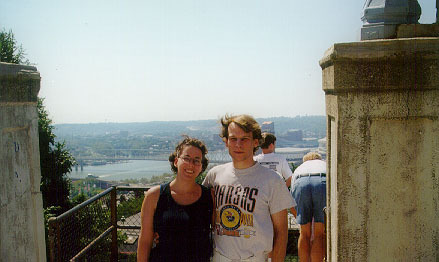
This is me in 1999, posing with M, my boyfriend at the time. He visited me a few times in Cincinnati before we moved in together. On his first visit, I took him to the Mt. Adams neighborhood, with magnificent views of the city.
Note: Read the first installment in this series.
After I graduated college, I packed up my 1985 Ford Thunderbird with all my belongings and drove to Cincinnati to start my job with F+W Publications.
I didn’t know anyone in the city except my boss, Greg. He served as my only anchor for many months, so much so that when I needed someone to drive me to the airport on Christmas Day, he was the only person I could ask. (He agreed and was even cheerful about it.)
My first year in Cincinnati, I lived in a furnished studio apartment in the Hyde Park neighborhood, recommended to me as the safe part of town. To make up for that bad advice I was given, I now discourage newcomers from moving there if they have any adventure left in them at all. Hyde Park is where you live if you have a lot of money, like to run, and have decided against the suburbs.
During those early years, if anyone ever visited me, my procedure was the same: Show them Mt. Adams—a San Francisco-style neighborhood with views of the city—then do something on the river, e.g., go to Montgomery Inn or take a cruise on BB Riverboats.
Today, no one visits me, but when they do, I feel at a loss as to what to show them. It’s not that Cincinnati doesn’t have worthwhile things to see, but its riches are best discovered through daily living, not tourism. Yes, there’s an increasingly vibrant downtown, and we’ve got Fountain Square, but for me, the enjoyments come from being local. Perhaps I’m too well-traveled—and that undercuts my perception of Cincinnati’s wow-features—but unless you live here, you probably can’t appreciate the combination of (1) low cost of living (2) high-quality urban life and arts community and (3) dramatic absence of typical city annoyances (traffic, crowds, etc).
[Note: I might have to take back that entire paragraph. This past weekend saw the grand opening of Smale Riverfront Park. That, plus The Banks development, promise to dramatically reshape Cincinnati's downtown. See all my photos here.]

Smale Riverfront Park
It took 10 years of working in Cincinnati for me to truly live in it. I moved to Over the Rhine (OTR), which is believed to be the largest urban historic district in the United States. It contains the largest collection of Italianate architecture in the country, and is an example of an intact 19th-century urban neighborhood.
OTR is the first neighborhood I’ve ever lived in where I’m not constantly getting in my car to leave it. All my favorite places—and many necessities—are within walking distance.
Unfortunately, the large bulk of my time in Cincinnati was grudgingly spent in Clifton, due to a longterm relationship with (and later marriage to) a UC doctoral student. Clifton is a sprawling university neighborhood, and even though I work there now and don’t mind it, the only fond memories I have of living in Clifton are my long-distance runs outside of it.
My most symbolic Clifton moment was when, on a Halloween evening, my boyfriend, M, answered a knock at the door only to find an adult male with a tall boy in a paper bag and a miniature American flag in his hand. He asked if he could use our phone. (This was before cell phones were commonplace.)
M looked at me, and I shook my head vigorously (the man at the door couldn’t see me), but M was sweet, naive, and from another country. Ultimately this guy asked M to give him a ride to the gas station where he was “late for work.” It was about a 5-minute drive away. M agreed.
Fifteen minutes later, M hadn’t returned … which turned into thirty minutes, then one hour. I called my best friend to ask what she thought I should do. She came over immediately with her husband. By that time, 90 minutes had passed. My friend started to go through some logical steps: Let’s call the gas station, let’s call the district station …
Just as she was about to convince me to call the police, M pulled up. I ran to the driveway and was hugging him through the open car door window before he had even turned off the engine. He acted like nothing had happened—he was merely annoyed at being duped into playing chauffeur all over the west side of Cincinnati based on a convoluted story about a diabetic mother who desperately needed meds and groceries.
I think that story is still getting told around Clifton to naive university students. Almost daily, as a university employee, I receive e-mail alerts about the latest criminal activity in the neighborhood. (See memes below from UC students.) I always tell the suburbanites, who ask about safety in Over the Rhine, that I’ve experienced far more criminal activity in Clifton than I ever have in OTR.
I wish I had more time to spend in OTR and downtown Cincinnati, to watch the continuing transformation of the neighborhood that may eventually become a big tourist destination. I think that’s beginning to happen (see Lonely Planet and New York Times), plus downtown resident population is up 12%. In case you’re curious, the video below gives you a good feel for my neighborhood + downtown.
I wonder if the magic will still be here when I return, and how it will feel to become an outsider.
May 18, 2012
4 Ways to Immediately Improve Your Book Marketing Efforts
When I see bad book marketing out in the wild, I wish I could do something productive to help that author (or sometimes publisher!) see how they’re wasting their time.
What is bad book marketing? It’s whenever I receive:
A tweet from a total stranger asking me to look at their book
An e-mail from a total stranger asking me to look at their book
A Facebook message from a total stranger asking me to look at their book
And so on—I think you get the idea.
Here are 4 ways to immediately improve your book marketing efforts. Perhaps you should save the link to this post, and offer it up via Facebook, Twitter, or e-mail to anyone engaging in time-wasting activity as described above.
1. Use your website for hard selling. Do not lean on social media for hard selling. Social media typically works best for long-term awareness efforts, relationship building, audience development, and general networking. It is not terribly effective for repeatedly telling people, in your own voice, over and over again, “Buy my book.” All of the information about why people might like your book—along with the hard-hitting sales pitch—should be on your website. If you don’t have your own website where you control the content and presentation, it’s next to impossible to have a successful book marketing campaign.
2. Brainstorm a list of all the meaningful relationships you have—people who you can count on to read your e-mails. Divide the list into three groups: (a) people who would probably like to be alerted to your new work, e.g., old classmates or coworkers, (b) people who have significant reach or influence with your target readership, e.g., a blogger or established author, and (c) your existing and devoted fans who may be willing to spread the word about your new work to their friends and connections. For Group A, write a brief announcement and include a link to your website for all the book details. For Group B, write a brief, personalized note to each person about your book promotion efforts, and offer 1-3 concrete ways they could help you—e.g., tweet about the book on a specific day, excerpt the book on their blog/site, run a Q&A, etc. For Group C, write a brief, general note asking for support in any way they feel comfortable, and provide examples of what that support might look like. If there are any influencers in Group C, consider moving them to Group B and writing something more personalized. Note: So few authors do any of this. Taking the time to write personalized e-mails will dramatically increase support from your network. You shouldn’t try to market and promote your book on your own; it takes a village, as they say.
3. Brainstorm a list of all the gatekeepers to your readers with whom you do not have a relationship yet—specific individuals and specific websites/blogs. For example, if you write romance, then popular romance review blogs would act as a gatekeeper. Do those blogs accept guest posts? Can you contribute to their community in some way? If you want to grow your readership, you’ll have to work beyond your existing network. Find a way to help gatekeepers—rather than demanding something of them—and you’ll find the whole process more successful AND enjoyable.
4. Invest in professional design and presentation for all marketing and self-promotion materials. This includes your website, your author photos, your book cover (the No. 1 book marketing tool, whether print or digital), your business cards, your Twitter avatar, your Facebook cover photo, etc. If you appear professional, that’s half the battle. Amateur design hurts you tremendously in the long run—especially when it comes to gatekeepers and influencers. Sorry, but appearance matters, and a professional presentation shows that you take yourself and your work seriously.
What do you think are some other concrete ways to immediately improve book marketing efforts? Share in the comments.
May 16, 2012
When Self-Publishing Is More Useful As a Marketing Tool
The turning point of my long-term publishing plans came when I realized I have very little in common with author Joanna Penn. Have you heard of her?
I started following Joanna on Twitter because she always shared great writing links, but I also began to follow her self-publishing story. She wrote a novel, released it as a 99-cent download, and reached 10,000 downloads after a few months.
Joanna blogged through the whole process and shared all of the details from editing to marketing. She worked really hard to pull it off, and as I added self-publishing to my own long-term publishing plans—plans that included books also published through large traditional publishers—I had no qualms about working hard.
For my self-publishing projects I marked up several drafts, lined up cover designers, sent out review copies, booked blog tours, and worked through spreadsheets listing everything else I had to do. The book received praise from experts, and my brother-in-law, a designer by trade, put together a sharp cover.
For all that fell into place, I dreaded opening those spreadsheets listing everything I had to do. You’d have thought I was being forced to slap a kitten each day.
I’ve always loved writing. Releasing my first commercially published book was a highlight of my life. Why did I hate self-publishing?
After processing my reaction to both self-publishing projects, I read Joanna Penn’s About Page one day. The light flickered on for me: Joanna had a business consulting background. She wasn’t just creative and dedicated to writing; she had the skills you need to run a successful business, which is a huge part of the self-publishing process.
Even the smallest publishing house provides more support than you’ll receive when self-publishing.
Self-publishing means that authors become small publishing companies. They aren’t just writing and editing. They need to manage a complex and draining process. There is layout, design, development editing, proofreading, retail planning, and marketing.
Doing all of these things well enough to sell more than fifty copies to my friends calls for a set of skills that many creative writers like myself simply don’t possess. Even if I had $5,000 on hand to hire designers, editors, and publicists, I’d turn myself into a publisher. Having published through large publishers, small publishers, and now independently, I’d much rather surrender a chunk of my royalties to an experienced publisher—heck, almost any publisher—so that I can pursue my creative calling.
Not sure about my take here? Read what Catherine Howard has to say:
We’ve seen time and time again that the self-publishers who enjoy consistent success are those who treat self-publishing like a business they’ve started up. They act like entrepreneurs, and make like their book is their first product—which it is.
I’m releasing my next book with a relatively small publisher that focuses on my niche, and the experience has been far better for me than self-publishing. They couldn’t pay out an advance, but I’m guaranteed a standard royalty. In return, they have edited the book, designed a cover, written marketing copy, developed a marketing plan, sought out endorsers, and reached out to retailers.
I could lament the non-existent advance, or I could focus on this: they’ve heavily invested in publishing my book after I paid them zip.
Best yet, I wrote the book and have been very involved in the design and marketing process, but they have managed the whole thing. Knowing that someone else is keeping the publishing process on track removes a tremendous burden from my mind and makes it far easier to develop creative marketing ideas.
I used to think of self-publishing as the only alternative to publishing with a large house. Now I’m committed to working with both large and small publishers. In addition, there are some strong subsidy publishers that provide excellent support to authors who have the means to pay for their services.
Now for my caveat: I haven’t ruled out self-publishing completely.
I’ll still create e-books that readers can download for free if they subscribe to my e-newsletter. E-books are also a great promotional tool. Even just selling a 10,000 word e-book on Amazon for 99 cents is a simple way to introduce readers to my work. It’s like I’m getting paid to advertise, but I have no illusions about building my career on these self-published books.
For example, each April 1, I release a prank e-book that my readers can download for 99 cents on Amazon (this year and last year). These e-books, which lovingly poke fun at the Christian subculture and my own quirks, are not a way to make money. They’re simply a way to introduce readers to my writing—even if I lose a few subscribers each year who miss the prank and think I’ve lost my mind.
Self-publishing is a great tool to keep in your publishing plans, but for creative writers such as myself, it is far more useful as a marketing tool. I don’t plan on writing another e-book until next April 1 because I don’t have the chops or desire to run my own small publishing company. When I hammer out 3,000 words in a morning, I hit a high that leaves me chattering about all of my ideas to my wife. When I run my own publishing company, she hears sobbing noises from my office.
I’m grateful that there’s a Joanna Penn in the world. I’ve learned a lot from her about publishing. The greatest lesson she taught me is that I’m not like her and that large and small publishing companies exist because there are authors like me who just want to write.
May 15, 2012
How Do You Answer “What Are You Working on Next?”

Mary-Jane reading
What are you working on next? is a question that always takes me by surprise (which is why it’s good advice for writers to have an answer prepared). Words gurgle in my throat. If I can’t change the subject, I mumble something about an essay or short story or blog post.
I want to say My Call to the Ring’s release date is not until September 2012.
It was November 2006 when Deirdre Gogarty handed me pages of true stories she’d written about Ireland, family, and her hard-fought battles to become a champion boxer. In an instant, I agreed to co-write her memoir. The chance of a lifetime had arrived. Like a pugilist who’d trained for an opportunity to fight, I’d been flexing my finger muscles for years. I immersed myself in our collaboration.
But there was a tradeoff—I lost volumes of family time.
Two months after I agreed to co-write Gogarty’s memoir, I sped to Women & Children’s hospital to welcome my granddaughter, Mary-Jane, into the world. She wailed and cooed. I rushed back to work.
And—pfffft!—she turned five.
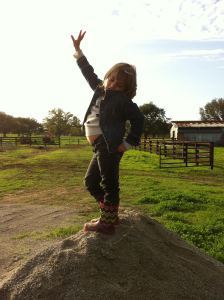
Mary-Jane
Her brother, Milas, clocked nine.
My mother, eighty-five.
And I no longer recognize my hands when I type.
What next?
I’ve been sparring with guilt for missing many of my grandchildren’s milestones. But I’ve concluded it was worth it to hand down examples of sacrifice and perseverance—Deirdre’s and mine—to teach them to follow their calling in life.
Now I’m back to work on those essays and short stories and blog posts. But I’m also taking numerous, long walks with my dog on the family farm while pondering clichés about time.
The way it never stops.
Or turns back.
The way it flies.
And since it often gets lost,
I wonder where it hides.

Nip-Nip hiding
May 14, 2012
The Best E-Publishing Resources
This week I’m teaching a 101 course on e-publishing with Writer’s Digest. I’ve taught it several times in the past year, but each time, I have to carefully update it. New services pop up, standards change, and things you couldn’t do before suddenly become possible—and vice versa. It can be a challenge even for me to keep up.
With that in mind, I thought I’d share what I consider the most trusted resources on e-books and e-publishing. If you think I’ve missed a critical resource, please let me know in the comments.
TeleRead. Sometimes it’s a firehose of information, but it’s helpful for quick updates on new devices, important launches, etc.
Digital Book World. This site is geared toward publishing insiders, but has plenty of material suited to authors. The more technically advanced author may want to check out on-demand webcasts related to e-book production. Or, start with Carolyn McCray’s helpful series on selling on Amazon.
The Book Designer (Joel Friedlander). Some of the best how-to information on self-publishing and e-publishing geared to indie authors. Very even-handed, service-oriented and comprehensive.
EBW Knowledge Base. Helpful resource that can explain the basics in plain English.
Step-by-step conversion guide for EPUB/MOBI starting with a Word doc (or something like Word). This requires that you download and use Calibre.
Creating & Formatting Documents for E-Readers Using EPUB. Similar to the above, just another way of doing it.
Liz Castro. This is for more technically advanced authors. Good how-to for anyone not afraid of coding who wants to delve into EPUB.
Resource list from Digital Book World. A good jumping off point for other legit resources, including special info for those working with InDesign.
And, separately, here are authors who have been successful e-publishing on their own. I list them as valuable and often essential resources, just keep in mind they can have strong opinions that aren’t shared by everyone.
JA Konrath. Try starting with: How to Make Money on E-Books.
Bob Mayer. Try starting with: How Do Covers for a Series Work?
John Locke. He’s written an ebook on how you can be as successful as him.
Cathryan Howard. Try starting with: How to Sell Self-Published Books: One at a Time.
Finally, you may want to check out my past posts on e-publishing:
10 Questions to Ask Before Committing to Any E-Publishing Service
Groundbreaking Tools for Creating E-Books
And don’t forget my class this Thursday that offers the 101 on how to publish your e-books
Jane Friedman
- Jane Friedman's profile
- 1882 followers



